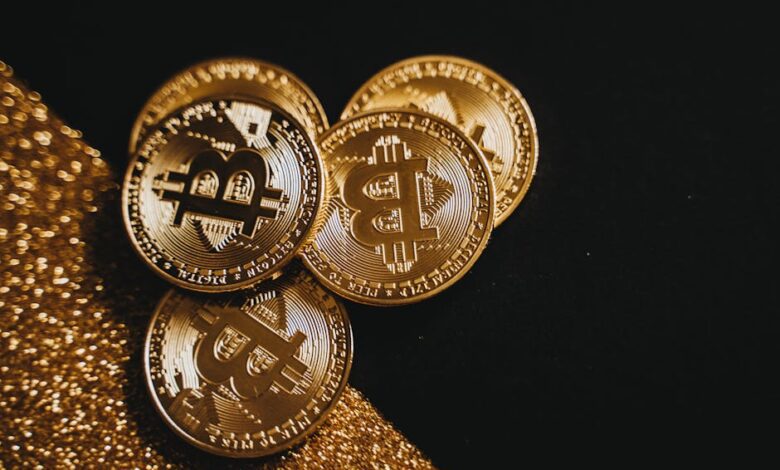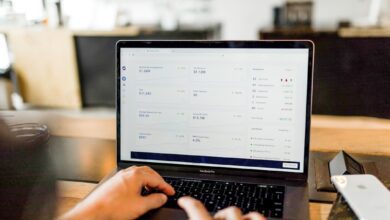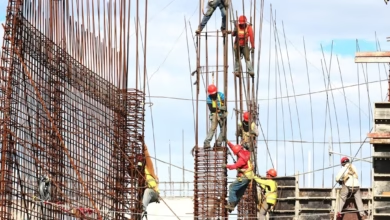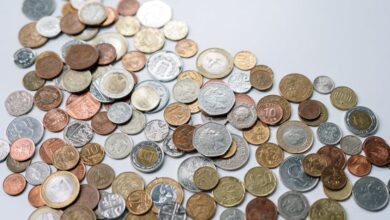Metals in Motion: Exploring the Interplay of Industry, Investment, and Economic Trends

In today's rapidly evolving economic landscape, the significance of metals extends far beyond their traditional uses, impacting both industrial applications and investment strategies. This article delves into the multifaceted roles of various metals, starting with silver, which serves as a critical resource in both manufacturing and as a hedge against economic uncertainty. We will explore how copper prices act as a barometer for global economic health, reflecting broader trends and shifts in market dynamics. The demand for rare earth metals is also on the rise, driven by the green energy revolution, prompting a reevaluation of their importance in sustainable technologies. Additionally, we will compare platinum and palladium as investment options, considering their unique properties and market behaviors. As inflation fluctuates, we will examine its impact on the prices of precious and industrial metals, alongside the future of aluminum in a sustainable economy. Finally, we will address how mining regulations shape metal prices and influence investment decisions. Join us as we navigate the intricate world of metal markets, uncovering insights that highlight the critical intersections of industry, investment, and sustainability.
- 1. "Navigating the Metal Markets: Silver's Dual Role in Industry and Investment"
- 2. "Copper Chronicles: Understanding Price Movements as Economic Indicators"
1. "Navigating the Metal Markets: Silver's Dual Role in Industry and Investment"
Silver occupies a unique position in the metal markets, serving as both a critical industrial component and a popular investment vehicle. This dual role has significant implications for its demand, pricing, and market dynamics.
In the industrial sector, silver is renowned for its excellent conductivity, thermal properties, and antibacterial qualities. It plays an essential role in various applications, including electronics, solar panels, and medical instruments. As industries increasingly adopt advanced technologies, the demand for silver is expected to rise. For instance, the growth of renewable energy sources, particularly solar power, has driven an uptick in silver consumption due to its use in photovoltaic cells.
On the investment side, silver is often viewed as a safe-haven asset, similar to gold. Investors turn to silver during times of economic uncertainty, inflation, or geopolitical tension, as it retains value and can act as a hedge against currency fluctuations. The relatively lower price of silver compared to gold also makes it an attractive option for smaller investors looking to diversify their portfolios.
However, the interplay between silver's industrial and investment demand can lead to volatility in its price. For example, a surge in industrial demand can push prices up, attracting speculative investment, which may further inflate prices. Conversely, if economic conditions lead to decreased industrial use, investors may sell off their holdings, resulting in price drops.
Overall, understanding the dual role of silver is crucial for navigating the metal markets. Investors and industry stakeholders alike must monitor trends in both sectors, as shifts in industrial demand or investor sentiment can significantly impact silver prices and market stability.
Silver plays a multifaceted role in both industrial and investment markets, making it a unique metal in the commodities landscape. In industry, silver is prized for its excellent conductivity, thermal properties, and antibacterial qualities, which lend themselves to a variety of applications. These include electronics, solar panels, medical devices, and batteries, positioning silver as a key component in advancing technology. As global industries pivot towards more sustainable practices, the demand for silver in green technologies—particularly in photovoltaic solar cells—has surged, indicating a strong correlation between industrial demand and the transition to renewable energy.
On the investment side, silver is often viewed as a safe haven asset, similar to gold. Investors turn to silver during times of economic uncertainty and inflation, as it provides a hedge against currency devaluation and market volatility. The dual role of silver—as an industrial necessity and an investment vehicle—creates a dynamic pricing landscape influenced by both market demand and macroeconomic factors.
Copper prices serve as a barometer for global economic health, reflecting broader trends in manufacturing and construction. Increased demand for copper is typically associated with economic expansion, as it is integral to electrical wiring, plumbing, and infrastructure projects. Conversely, falling copper prices may signal a slowdown in economic activity. This correlation is critical for investors and policymakers alike, as monitoring copper price trends can provide insights into future economic conditions.
The rise of green energy technologies significantly impacts the demand for rare earth metals, which are essential for producing high-efficiency batteries, wind turbines, and electric vehicles. As nations commit to reducing carbon emissions and investing in renewable energy sources, the need for these critical materials is expected to grow. This shift not only influences pricing dynamics but also amplifies the importance of securing stable supply chains for rare earth metals.
When comparing platinum and palladium as investment options, it's essential to consider their industrial uses, price volatility, and market demand. Platinum is primarily utilized in catalytic converters for vehicles, while palladium has seen increased use in gasoline engines. The ongoing transition to electric vehicles may alter demand for both metals, impacting their investment attractiveness. Investors must weigh these factors alongside historical price trends and geopolitical considerations.
The diversification of investment portfolios often includes metals, as they can provide stability and protection against inflation. Precious metals, including gold and silver, are particularly sought after during economic downturns, while industrial metals like copper and aluminum can benefit from infrastructure spending and economic growth. Understanding the unique attributes of each metal allows investors to construct a balanced portfolio that mitigates risk.
Inflation directly affects the prices of precious and industrial metals. As the cost of living rises, investors typically flock to tangible assets to preserve value. This increased demand can drive prices higher, creating a self-reinforcing cycle. Additionally, mining costs may rise due to inflation, further influencing the pricing dynamics of these metals.
Aluminum is positioned to play a crucial role in a sustainable economy, especially as industries seek lightweight materials for energy-efficient products. Its recyclability and low processing energy requirements make it an attractive option for manufacturers aiming to reduce their carbon footprint. The future of aluminum is intertwined with sustainable practices, and its demand is likely to grow as more companies prioritize eco-friendly materials.
Mining regulations significantly impact metal prices by influencing supply and operational costs. Stricter regulations can lead to increased compliance costs for mining companies, potentially reducing production levels and driving prices higher. Conversely, relaxed regulations may lead to oversupply and price drops. Understanding the regulatory landscape is vital for investors looking to navigate the complexities of the metal markets.
2. "Copper Chronicles: Understanding Price Movements as Economic Indicators"
Copper is often referred to as "Dr. Copper" due to its reputation as a reliable indicator of global economic health. This reputation stems from copper's widespread use in various sectors, including construction, electronics, and manufacturing. When economies are thriving, demand for copper typically rises, reflecting increased industrial activity and infrastructure development. Conversely, a decline in demand can signal economic slowdown or recession, as projects are put on hold and manufacturing slows down.
Price movements in copper can provide insights into future economic trends. For example, rising copper prices often coincide with bullish economic forecasts, as industries ramp up production in anticipation of increased consumer spending. Conversely, falling prices may indicate decreased demand, suggesting that businesses are preparing for lower economic activity. Analysts closely monitor these price fluctuations, along with other economic indicators such as employment rates and GDP growth, to gauge overall economic sentiment.
Global events, such as trade tensions, supply chain disruptions, and geopolitical uncertainties, can also significantly impact copper prices. For instance, a major mining strike or natural disaster in a key copper-producing country can lead to supply shortages, driving prices up. Conversely, a resolution to trade disputes or improvements in supply chain logistics can stabilize or lower prices.
In addition to these factors, the emerging green energy sector is increasingly influencing copper demand. The transition to renewable energy sources, such as wind and solar, and the rise of electric vehicles, which rely heavily on copper for wiring and batteries, are expected to increase demand in the coming years. As such, monitoring copper prices not only provides insight into current economic conditions but also signals potential shifts in future market dynamics driven by technological advancements and changing energy policies.
In summary, copper prices serve as a crucial barometer for economic health, reflecting both immediate industrial demand and broader economic trends, making them an essential component of market analysis for investors and policymakers alike.
In conclusion, the dynamics of metal markets are complex and multifaceted, influenced by a variety of economic, industrial, and technological factors. Silver's unique position as both an industrial component and a sought-after investment vehicle highlights its versatility and importance in contemporary markets. Similarly, copper prices serve as a barometer for global economic health, reflecting broader trends that affect both investors and industries alike. The increasing demand for rare earth metals, driven by the rise of green energy technologies, underscores the urgency of sustainable practices in mining and production.
When considering precious metals like platinum and palladium, investors must weigh their distinct characteristics and market behaviors to make informed decisions. The role of metals in diversifying investment portfolios is undeniable, especially in an environment where inflation can significantly impact prices. As we look to the future, aluminum's potential in a sustainable economy will be pivotal, particularly as industries seek environmentally friendly alternatives.
Lastly, mining regulations play a critical role in shaping the landscape of metal prices, affecting supply chains and market stability. Understanding these interconnected elements is essential for investors and industry stakeholders alike, as they navigate the opportunities and challenges within the metal markets. As we move forward, staying informed about these trends will be crucial for making strategic investment choices in an ever-evolving economic landscape.





